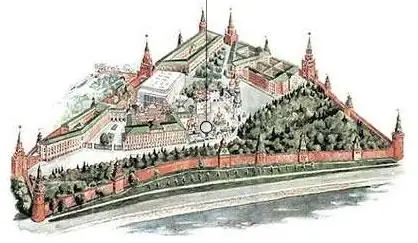- Author Harold Hamphrey [email protected].
- Public 2023-12-17 10:06.
- Last modified 2025-01-24 11:10.
Minsk is a city with a population of 2 million people. The map of the Minsk metro is a real walk through history. The very first stations, as well as quite new ones, have been preserved here. At the same time, anyone, even a foreigner, can understand the scheme: all names are duplicated in Latin.
A bit of history
It should be noted, speaking of the Belarusian metro, the Minsk scheme is unique: it is the only one in the whole country. To date, the total length of the underground tunnels is 25 kilometers, on which there are two branches (blue and red) and 29 stations.

And it all started in the 60s of the last century. Even then, local architects hatched the idea to create the country's first subway line in the city. However, plans had to be postponed: by law, only cities whose population exceeded one million could acquire a fourth mode of transport.
So when that number was reached in 1976, design work began. Initially, the line consisted of 8 stations, the first of which was Park Chelyuskintsev. It was planned to make the metro in 8 years, but they managed it earlier: the transport was ready forapplication after 7 years.
Blue branch

Not without its difficulties. For example, how to build a station that is next to the watery soil of the river? However, already on June 30, 1984, the festive opening of the first stations took place. Among them were the Institute of Culture, Lenin Square, Oktyabrskaya, Victory Square, Yakub Kolos Square, Academy of Sciences, Park Chelyuskintsev and Moskovskaya. All these stations are still operating today.
The rest of the stations of the blue line began to be attached gradually. Two years after the opening of the metro, the Vostok station was opened, which made it easier for the residents of this microdistrict to reach the center. In 2007, the branch was extended with two more stations: Uruchche and Borisovsky Trakt.
The most modern metro stations - "Grushevka", "Mikhalovo", "Petrovshchina" and "Malinovka" - have become the final ones on the blue line.

What about the other line?
The red metro line is somewhat younger: its construction began a little later. The first stations were opened on the last day of 1990. These were Frunzenskaya, Nemiga, Kupalovskaya, Proletarskaya and Tractor Plant.
Interesting fact: the Pervomayskaya metro station, which is located between Kupalovskaya and Proletarskaya, opened only a few months later. Initially, it was not planned at all in the project. However, due to the distance between the two stops, some changes were made to the plan. Even now the exit from the train is hereis carried out in the door on the right side, and not on the left, as at all stations.
From 1995 to 2005, the red line expanded, new stations were added that connected different parts of the city. This is what the Minsk metro scheme looked like in 2014. And at the moment, it is planned to add three more new stops to the red and blue lines: Smolenskaya, Shabany and Krasny Bor.
Green line
A new scheme is planned in the Minsk metro. The construction of another green line is already in full swing. Already this year, it is planned to open three stations: Kovalskaya Sloboda, Vokzalnaya, Ploshcha Frantishek Bogushevich and Yubileynaya Ploshchad. The remaining stations on the branch, which will have a total of 14 stations, will be in operation by 2020.
Earlier, it was also planned to add one more branch to the Minsk metro scheme - purple. It would connect the city from Zhdanovichi, Drozdov and Vesnyanka to Chizhovka and Serebryanka. However, the project was canceled and the green line is currently under construction.

New look
Recently, a competition was held in Belarus to create a new Minsk metro scheme. It was attended by young designers from all over the country. Until some time, only the names of stations were indicated on the map, and the presence of ATMs was indicated at some points.
The authorities decided to approach the problem more comprehensively: they need to give detailed information about the journey. But how to fit everything on a small piece of paper? After some thought, the problem was solved, anda new scheme of the Minsk metro appeared. On it, remote stations are still marked with symbolic circles, while the central ones are described in more detail. Now on the metro map you can see the nearest sights, rivers, and the location of ground transport stops.
In addition, the order of writing stations in Latin was simplified. Since the names of the stations were proposed in the Belarusian language, such letters as ć, ś, ł, etc. were used during transcription. In the new format of the scheme, such characters were completely abandoned, taking the familiar English alphabet as a basis.
One more innovation - all microdistricts of the city are now marked on the map. Passengers do not have to dig into the phone, looking for the right direction: all the information will be located on the map. It will also indicate the direction of transport from the center to the microdistricts, since not all areas of Minsk are still connected by metro lines. Now you can easily get from one end of the city to the other.






